Chrysler 2012 Annual Report Download - page 82
Download and view the complete annual report
Please find page 82 of the 2012 Chrysler annual report below. You can navigate through the pages in the report by either clicking on the pages listed below, or by using the keyword search tool below to find specific information within the annual report.-
 1
1 -
 2
2 -
 3
3 -
 4
4 -
 5
5 -
 6
6 -
 7
7 -
 8
8 -
 9
9 -
 10
10 -
 11
11 -
 12
12 -
 13
13 -
 14
14 -
 15
15 -
 16
16 -
 17
17 -
 18
18 -
 19
19 -
 20
20 -
 21
21 -
 22
22 -
 23
23 -
 24
24 -
 25
25 -
 26
26 -
 27
27 -
 28
28 -
 29
29 -
 30
30 -
 31
31 -
 32
32 -
 33
33 -
 34
34 -
 35
35 -
 36
36 -
 37
37 -
 38
38 -
 39
39 -
 40
40 -
 41
41 -
 42
42 -
 43
43 -
 44
44 -
 45
45 -
 46
46 -
 47
47 -
 48
48 -
 49
49 -
 50
50 -
 51
51 -
 52
52 -
 53
53 -
 54
54 -
 55
55 -
 56
56 -
 57
57 -
 58
58 -
 59
59 -
 60
60 -
 61
61 -
 62
62 -
 63
63 -
 64
64 -
 65
65 -
 66
66 -
 67
67 -
 68
68 -
 69
69 -
 70
70 -
 71
71 -
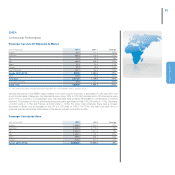 72
72 -
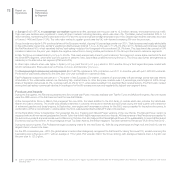 73
73 -
 74
74 -
 75
75 -
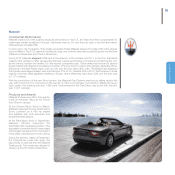 76
76 -
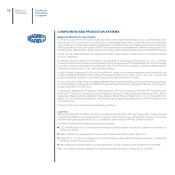 77
77 -
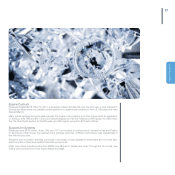 78
78 -
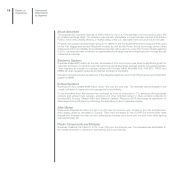 79
79 -
 80
80 -
 81
81 -
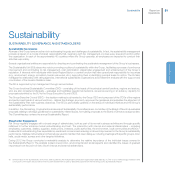 82
82 -
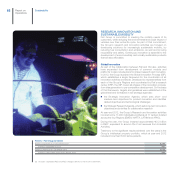 83
83 -
 84
84 -
 85
85 -
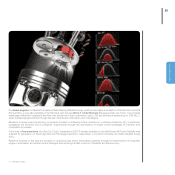 86
86 -
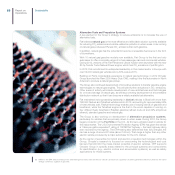 87
87 -
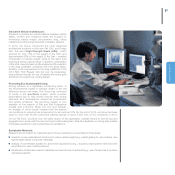 88
88 -
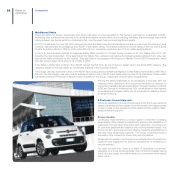 89
89 -
 90
90 -
 91
91 -
 92
92 -
 93
93 -
 94
94 -
 95
95 -
 96
96 -
 97
97 -
 98
98 -
 99
99 -
 100
100 -
 101
101 -
 102
102 -
 103
103 -
 104
104 -
 105
105 -
 106
106 -
 107
107 -
 108
108 -
 109
109 -
 110
110 -
 111
111 -
 112
112 -
 113
113 -
 114
114 -
 115
115 -
 116
116 -
 117
117 -
 118
118 -
 119
119 -
 120
120 -
 121
121 -
 122
122 -
 123
123 -
 124
124 -
 125
125 -
 126
126 -
 127
127 -
 128
128 -
 129
129 -
 130
130 -
 131
131 -
 132
132 -
 133
133 -
 134
134 -
 135
135 -
 136
136 -
 137
137 -
 138
138 -
 139
139 -
 140
140 -
 141
141 -
 142
142 -
 143
143 -
 144
144 -
 145
145 -
 146
146 -
 147
147 -
 148
148 -
 149
149 -
 150
150 -
 151
151 -
 152
152 -
 153
153 -
 154
154 -
 155
155 -
 156
156 -
 157
157 -
 158
158 -
 159
159 -
 160
160 -
 161
161 -
 162
162 -
 163
163 -
 164
164 -
 165
165 -
 166
166 -
 167
167 -
 168
168 -
 169
169 -
 170
170 -
 171
171 -
 172
172 -
 173
173 -
 174
174 -
 175
175 -
 176
176 -
 177
177 -
 178
178 -
 179
179 -
 180
180 -
 181
181 -
 182
182 -
 183
183 -
 184
184 -
 185
185 -
 186
186 -
 187
187 -
 188
188 -
 189
189 -
 190
190 -
 191
191 -
 192
192 -
 193
193 -
 194
194 -
 195
195 -
 196
196 -
 197
197 -
 198
198 -
 199
199 -
 200
200 -
 201
201 -
 202
202 -
 203
203 -
 204
204 -
 205
205 -
 206
206 -
 207
207 -
 208
208 -
 209
209 -
 210
210 -
 211
211 -
 212
212 -
 213
213 -
 214
214 -
 215
215 -
 216
216 -
 217
217 -
 218
218 -
 219
219 -
 220
220 -
 221
221 -
 222
222 -
 223
223 -
 224
224 -
 225
225 -
 226
226 -
 227
227 -
 228
228 -
 229
229 -
 230
230 -
 231
231 -
 232
232 -
 233
233 -
 234
234 -
 235
235 -
 236
236 -
 237
237 -
 238
238 -
 239
239 -
 240
240 -
 241
241 -
 242
242 -
 243
243 -
 244
244 -
 245
245 -
 246
246 -
 247
247 -
 248
248 -
 249
249 -
 250
250 -
 251
251 -
 252
252 -
 253
253 -
 254
254 -
 255
255 -
 256
256 -
 257
257 -
 258
258 -
 259
259 -
 260
260 -
 261
261 -
 262
262 -
 263
263 -
 264
264 -
 265
265 -
 266
266 -
 267
267 -
 268
268 -
 269
269 -
 270
270 -
 271
271 -
 272
272 -
 273
273 -
 274
274 -
 275
275 -
 276
276 -
 277
277 -
 278
278 -
 279
279 -
 280
280 -
 281
281 -
 282
282 -
 283
283 -
 284
284 -
 285
285 -
 286
286 -
 287
287 -
 288
288 -
 289
289 -
 290
290 -
 291
291 -
 292
292 -
 293
293 -
 294
294 -
 295
295 -
 296
296 -
 297
297 -
 298
298 -
 299
299 -
 300
300 -
 301
301 -
 302
302 -
 303
303 -
 304
304 -
 305
305 -
 306
306 -
 307
307 -
 308
308 -
 309
309 -
 310
310 -
 311
311 -
 312
312 -
 313
313 -
 314
314 -
 315
315 -
 316
316 -
 317
317 -
 318
318 -
 319
319 -
 320
320 -
 321
321 -
 322
322 -
 323
323 -
 324
324 -
 325
325 -
 326
326 -
 327
327 -
 328
328 -
 329
329 -
 330
330 -
 331
331 -
 332
332 -
 333
333 -
 334
334 -
 335
335 -
 336
336 -
 337
337 -
 338
338 -
 339
339 -
 340
340 -
 341
341 -
 342
342 -
 343
343 -
 344
344 -
 345
345 -
 346
346
 |
 |

81
Report on Operations
Sustainability
4
SUSTAINABILITY GOVERNANCE AND STAKEHOLDERS
Sustainability Governance
All areas of the Group have an active role in addressing the goals and challenges of sustainability. In fact, the sustainability management
process is based on a model of shared responsibility that, beginning with top management, involves every area and function within
the organization. In each of the approximately 40 countries where the Group operates, all employees are expected to conduct their
activities responsibly.
Several organizational entities are responsible for directing and coordinating the sustainable management of the Group’s businesses.
The Sustainability Unit (SU) plays a key role in promoting a culture of sustainability within the Group, facilitating a process of continuous
improvement and contributing to risk management, cost optimization, stakeholder engagement and enhancement of the Group’s
reputation. It interacts with individuals within each Region/Sector or central function that have operational responsibility for key areas
(e.g., environment, energy, innovation, human resources, etc.), supporting them in identifying principal areas for action. The SU also
manages the relationship with rating agencies, international sustainability organizations and investment analysts with the support and
coordination of the Investor Relations team.
The SU is supported by top management through various bodies.
The Cross-functional Sustainability Committee (CSC) – consisting of the heads of the principal central functions, regions and sectors,
who are also consulted individually – evaluates and facilitates operational decisions, as well as serving in an advisory capacity for
proposals submitted by the SU to the Group Executive Council (GEC).
The Group Executive Council (GEC) – the decision-making body headed by the Group CEO and composed of the COOs of the regions
and sectors and heads of various functions – defines the strategic approach, approves the guidelines and evaluates the alignment of
the Sustainability Plan with business objectives. The GEC is periodically updated on the status of individual initiatives and the Group’s
sustainability performance.
In addition, the Nominating, Corporate Governance and Sustainability Committee (a sub-committee of the Board of Directors) evaluates
proposals relating to strategic guidelines for sustainability-related issues, formulating proposals to the Board of Directors as appropriate.
The Committee also reviews the annual Sustainability Report.
Stakeholder Engagement
Fiat Group regularly engages with a broad range of stakeholders, both as part of its normal business activities and through specific
initiatives to further enhance mutual understanding and trust. The interaction with internal and external stakeholders – including
employees, customers, dealers, suppliers, trade unions, investors, public authorities, the environment, local communities and NGOs –
is essential to understanding their expectations, needs and concerns and ensuring continued improvement in the Group’s sustainability
performance. Multiple instruments and channels are used to maintain that open dialogue, including meetings with specific groups, town
halls, social media, surveys and other targeted initiatives.
During 2012 the Group conducted a materiality analysis to determine the relative importance of the individual issues covered in
the Sustainability Report. The analysis looked at economic, environmental and social aspects and identified the issues of greatest
importance from the point of view of both internal and external stakeholders.
(4) All information in the Sustainability section has been audited by the independent certification organization SGS Italia S.p.A. The scope, methodology, limitations and
conclusions of the audit are provided in the Assurance Statement issued by SGS and published in the Fiat Group 2012 Sustainability Report.
Sustainability
Report on
Operations
